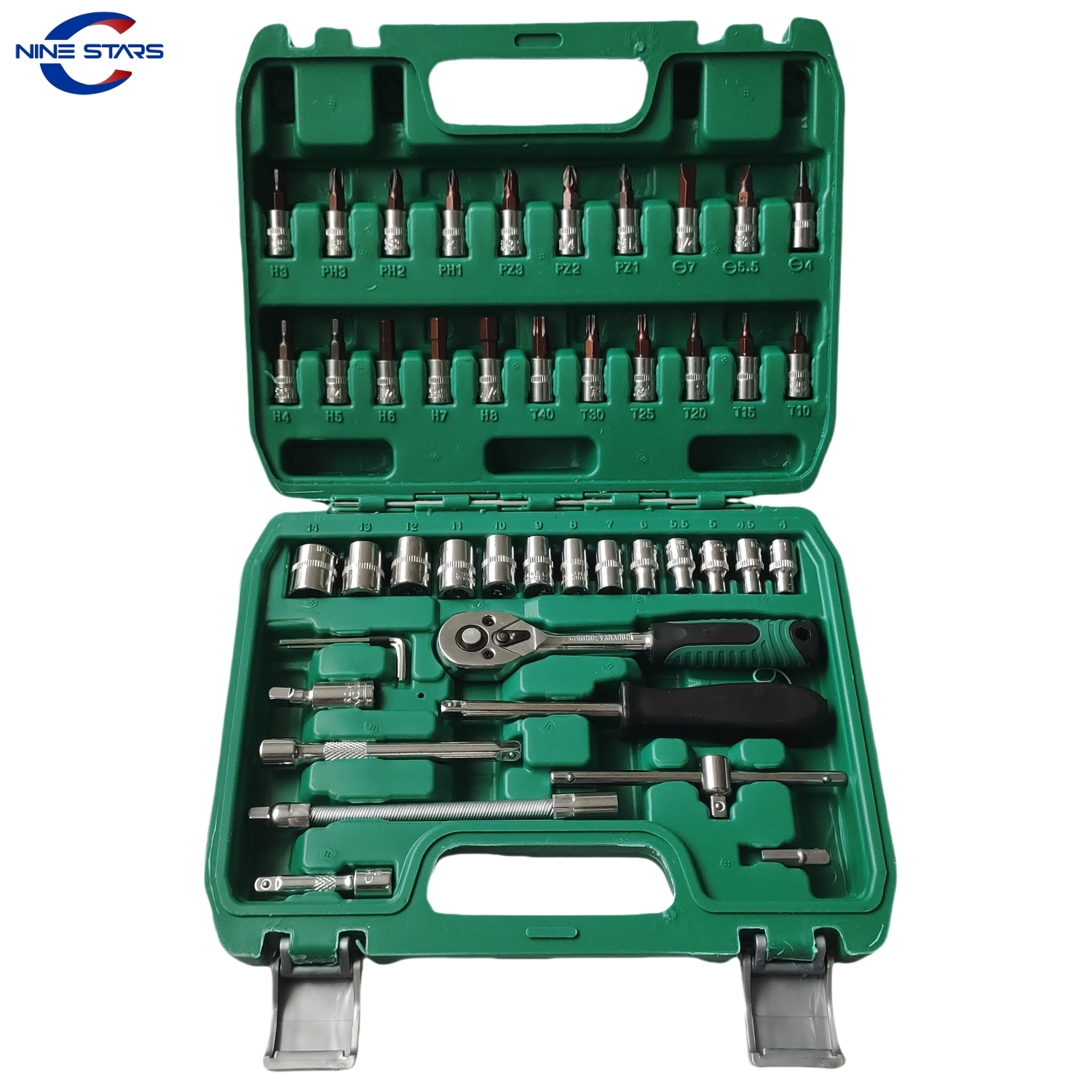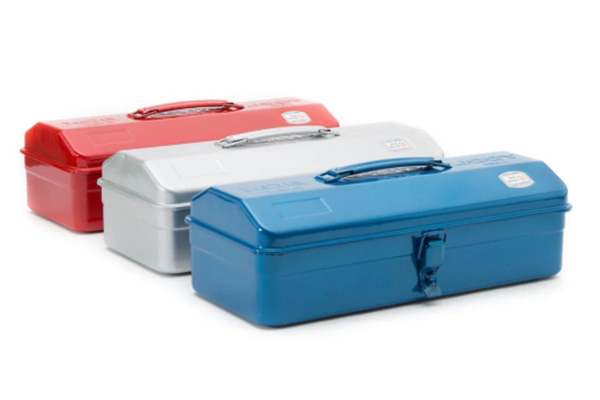This article explores the best portable tool box options available on the market, catering to both professionals and DIY enthusiasts. We'll delve into various types, features, and considerations to help you choose the perfect tool box for your needs, ensuring your tools are organized, protected, and easily transportable. Whether you're a seasoned mechanic or a weekend warrior, finding the right tool storage solution is critical. This guide will help you make an informed decision, saving you time and frustration.
What Makes a Portable Tool Box "The Best"?
The "best" portable tool box isn't a one-size-fits-all answer. It depends heavily on individual needs and preferences. However, some key characteristics define a top-quality tool box. These include:
- Durability: The tool box must withstand the rigors of transport and daily use. It should be made of rugged materials like heavy-duty plastic, steel, or even aluminum.
- Portability: Easy to carry is paramount. Look for comfortable handles, reasonable weight (when empty), and potentially wheels for larger tool boxes.
- Organization: Internal compartments, dividers, trays, and small pockets are essential for keeping hand tools, sockets and wrenches, and accessories neatly arranged and easily accessible. A well-organized tool box saves time and prevents frustration.
- Security: A secure latch system is crucial to protect your valuable tools. Some tool boxes offer padlock compatibility for added security.
- Capacity: Choose a tool box with enough storage space to accommodate your current tools and potentially future additions.
The ideal tool box strikes a balance between these factors. A mechanic might prioritize a large, rolling tool box with numerous drawers, while a DIYer might prefer a smaller, lighter portable tool box for occasional home repairs.
How Important is Durability in a Tool Box?
Durability is arguably the most critical factor when choosing a tool box, especially for professionals. A tool box is an investment, and a flimsy one will quickly fall apart under the stress of daily use and transport.
Think about the conditions your tool box will face: being tossed in the bed of my truck, exposed to the elements, possibly dropped, and subjected to the weight of heavy tools. A durable tool box is constructed from high-quality materials, such as impact-resistant plastic, reinforced steel, or aluminum. Look for features like:
- Strong hinges: These are often a weak point in cheaper tool boxes.
- Robust latches: They should securely close the tool box and withstand repeated use.
- Reinforced corners: These provide extra protection against impacts.
- Water resistance: If you work outdoors, a water-resistant tool box will keep your tools dry and prevent rust. My tool box protects my tools in all situations, even from things like sand and gravel.
A durable tool box might cost a bit more upfront, but it will save you money in the long run by protecting your valuable tools and lasting for years of use. I have several options in stock that will provide years of use, such as the 32 Pcs Tool Kit Silver-Colored Wrench Socket Set Auto Repair Machine Repair Ratchet Wrench Socket.
Are Metal Tool Boxes Better Than Plastic Tool Boxes?
The choice between metal tool boxes and plastic tool boxes depends on your priorities. Both have advantages and disadvantages.
Metal Tool Boxes (Steel or Aluminum):
- Pros:
- Exceptional durability and strength.
- Resistant to dents and impacts.
- Can often hold heavier tools.
- Offer a more professional look.
- Cons:
- Heavier than plastic, making them less portable.
- Prone to rust if not properly coated or maintained.
- Can be dented, although they are generally very strong.
- May be noisier when tools shift inside.
Plastic Tool Boxes:
- Pros:
- Lightweight and portable.
- Resistant to rust and corrosion.
- Often more affordable than metal tool boxes.
- Can be surprisingly durable, especially high-quality, impact-resistant plastic.
- Cons:
- Less durable than metal overall.
- May crack or break under heavy loads or impacts.
- Can be susceptible to UV damage over time.
For heavy-duty professional use, a steel toolbox or an aluminum tool box is often the preferred choice. For lighter use and maximum portability, a high-quality plastic tool box can be an excellent option. I have been in this industry for many years, and have sold both. From my experience, this Green Stainless Steel Tool Box 19 Inch Stainless Steel Tool Box is a great, durable, metal choice.

What are the Advantages of a Modular Tool Box System?
Modular tool box systems, like the Milwaukee Packout or DeWalt ToughSystem, are becoming increasingly popular. These systems consist of interlocking tool boxes, organizers, and other components that can be stacked and connected in various configurations.
Advantages of Modular Systems:
- Customization: You can build a system that perfectly suits your needs, adding or removing components as required.
- Expandability: Easily add more storage as your tool collection grows.
- Portability: Many modular systems include a rolling base or dolly, making it easy to transport even a large collection of tools.
- Organization: Each component is designed for specific types of tools, maximizing organization and efficiency.
- Durability: Typically made from high-quality materials to withstand demanding conditions.
While modular systems can be more expensive upfront, they offer significant advantages in terms of flexibility, organization, and portability, making them a worthwhile investment for many professionals and serious DIYers.
What Size Portable Tool Box Do I Need?
The size of portable tool box you need depends entirely on the number and size of tools you need to store and transport. It's crucial to choose a box that's large enough to comfortably hold your tools without being excessively bulky or heavy.
Consider the following:
- Current Tool Collection: Make a list of all the tools you regularly use, including hand tools, power tools, sockets, wrenches, pliers, screwdrivers, and any specialized equipment.
- Future Expansion: Think about any tools you plan to acquire in the near future. It's better to have a little extra space than to outgrow your tool box too quickly.
- Typical Tasks: Consider the types of projects you typically undertake. A mechanic will need a much larger tool box than someone who only performs occasional home repairs.
- Portability: Remember, you'll be carrying this tool box. Choose a size that you can comfortably lift and maneuver, even when it's full.
A small tool box might be sufficient for a basic set of hand tools, while a larger portable toolbox or even a rolling tool chest might be necessary for a more extensive collection. We have many sizes for sale, from large to small. This 1/4" 46 Pcs tool kit Set Socket Mechanical Repair Combination Socket Wrench Tool is one of our smaller sets.

How Can I Maximize Organization Within My Tool Box?
A well-organized tool box saves time, prevents frustration, and protects your tools from damage. Here are some tips for maximizing organization:
- Use Dividers: Many tool boxes come with removable dividers that allow you to create custom compartments for different types of tools.
- Utilize Trays: Lift-out trays are perfect for storing frequently used tools and accessories, providing easy access.
- Consider Foam Inserts: Custom-cut foam inserts provide a snug and secure fit for each tool, preventing them from shifting during transport.
- Label Compartments: Labeling compartments, especially in larger tool boxes, helps you quickly locate the tool you need.
- Utilize Small Pockets and Organizers: These are ideal for storing small parts, fasteners, and accessories.
- Vertical Storage: Use the inside of the lid for storing items like wrenches or screwdrivers, if possible. Some boxes have built-in hangers for this purpose.
By implementing these strategies, you can transform your tool box from a jumbled mess into an efficient and organized workspace. Keeping your tools organized will also increase the life of your toolbox.
What are the Key Features to Look for in a Portable Tool Box?
Beyond durability, portability, and organization, several other features can enhance the functionality and convenience of a portable tool box:
- Comfortable Handle: Look for a handle that is ergonomically designed and comfortable to grip, especially if you'll be carrying the tool box for extended periods.
- Lid Support: A mechanism to hold the lid open is a valuable feature, preventing it from slamming shut and providing easier access to your tools.
- Water Resistance: If you work outdoors or in damp environments, a water-resistant or waterproof tool box is essential to protect your tools from rust and corrosion.
- Locking Capability: A padlock hasp or built-in lock provides added security, especially if you store valuable tools in your tool box.
- Stackability: If you plan to acquire multiple tool boxes, consider stackable models to save space and improve organization.
- Weight Capacity: Pay attention to the manufacturer's stated weight capacity to ensure the tool box can safely handle the weight of your tools.
- Removable Trays: A tray that fits on top can make the box feel less deep.
- Material: Toolboxes are typically constructed from either plastic or metal. Some boxes offer a combination of the two.
By considering these features, you can select a portable tool box that not only meets your basic needs but also enhances your overall workflow and tool management. I would recommend this box Tool Cabinet Red 5 Drawer Tool Cabinet Mobile Tool Cart to anyone looking for storage and mobility.
Should I Consider a Tool Bag or Tool Backpack Instead?
Tool bags and tool backpacks offer alternative solutions to traditional tool boxes, particularly for those who prioritize portability and convenience.
Tool Bags:
- Pros:
- Lightweight and easy to carry.
- Often have numerous pockets and compartments for organization.
- Flexible and can conform to different shapes and spaces.
- Generally more affordable than hard-sided tool boxes.
- Cons:
- Less durable than tool boxes.
- Offer less protection for tools from impacts.
- May not be suitable for heavy or sharp tools.
- Can be difficult to keep organized if overloaded.
Tool Backpacks:
- Pros:
- Hands-free portability, ideal for climbing ladders or working in tight spaces.
- Distribute weight evenly, reducing strain on your back and shoulders.
- Often have multiple compartments and pockets for organization.
- Can be surprisingly comfortable, even when loaded with tools.
- Cons:
- Can be bulky and awkward in confined spaces.
- May not be suitable for very heavy tools.
- Can be more expensive than tool bags or basic tool boxes.
If you frequently need to carry your tools over long distances or work in situations where hands-free portability is essential, a tool backpack like the Veto Pro Pac might be a good choice. For lighter loads and maximum flexibility, a tool bag can be a practical option. For most, a toolbox is ideal.
How Do Tool Chests and Rolling Tool Boxes Compare to Portable Tool Boxes?
Tool chests and rolling tool boxes (also known as rolling tool chests) are designed for storing larger quantities of tools and are typically less portable than portable tool boxes.
Tool Chests:
- Pros:
- Large storage capacity.
- Multiple drawers for organized storage.
- Durable construction, usually made of steel.
- Often include a locking system for security.
- Cons:
- Heavy and difficult to move.
- Not designed for portability.
- Require a dedicated workspace.
Rolling Tool Boxes:
- Pros:
- Large storage capacity, similar to tool chests.
- Wheels and a handle for portability.
- Multiple drawers and compartments for organization.
- Durable construction, often made of steel.
- Cons:
- Still relatively heavy and bulky, even with wheels.
- Require a relatively smooth surface for easy rolling.
- Can be expensive.
Tool chests and rolling tool boxes are ideal for mechanics, workshops, and anyone who needs to store a large collection of tools in a central location. Portable tool boxes are better suited for tasks that require mobility and carrying tools to different locations.
What is the best way to transport my tool box?
Transporting a toolbox safely and efficiently requires a bit of planning. Consider the mode of transportation, the weight and dimensions of the box, and the sensitivity of the tools inside.
For short distances, a sturdy handle is usually sufficient, ensuring a firm grip and balanced load. When using a vehicle, secure the toolbox to prevent shifting during transit. Straps or bungee cords can be used to tie it down in a truck bed or car trunk.
For heavier toolboxes or longer distances, a rolling toolbox or a hand truck can save a lot of strain. If you're flying, check with the airline for their specific regulations regarding tool transportation.
Here is a summary of the main ways to transport a tool box.
- Hand Carry: Use a sturdy handle, ensuring a balanced load.
- Vehicle Transport: Secure the toolbox with straps or bungee cords.
- Rolling Toolbox: For heavy boxes, use the built-in wheels and handle.
- Hand Truck/Dolly: Ideal for heavy, non-rolling toolboxes over longer distances.
- Air Travel: Check airline regulations; may require special packaging or check-in.

Summary of Key Considerations
Here’s a summary of the most important things to remember:
- Durability is key: Choose a tool box made from high-quality materials that can withstand the rigors of your work.
- Portability matters: Consider the weight and size of the tool box, and whether you need wheels or a comfortable handle.
- Organization is essential: Look for features like dividers, trays, and pockets to keep your tools neatly arranged.
- Size appropriately: Select a tool box that's large enough to hold your tools without being excessively bulky.
- Consider your needs: Think about the types of tools you use, the projects you undertake, and how often you need to transport your tools.
- Explore alternatives: Tool bags and tool backpacks offer advantages in certain situations.
- Modular systems offer flexibility: If you need a customizable and expandable storage solution, consider a modular tool box system.
- Don't forget security: Protect your valuable tools with a secure latching system and consider padlock compatibility.
- Think of your preferred transportation: Consider how you'll typically transport your tools: by hand, in a vehicle, or using a rolling system.
By carefully considering these factors, you can choose the best portable tool box that meets your specific requirements, ensuring your tools are protected, organized, and ready for any task.
Post time: 03-25-2025



